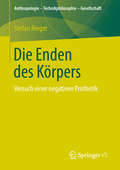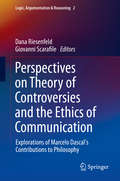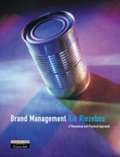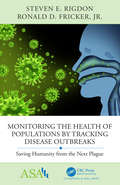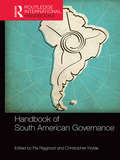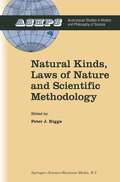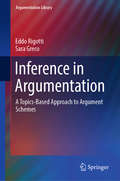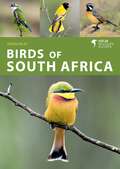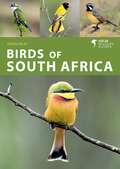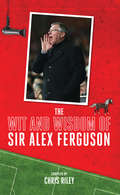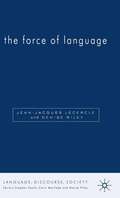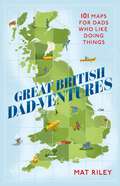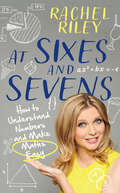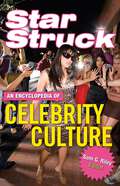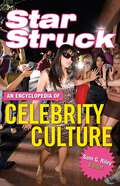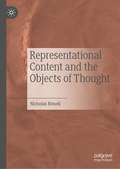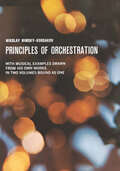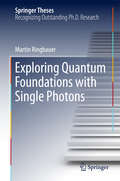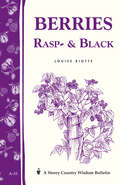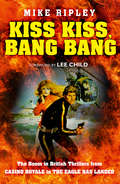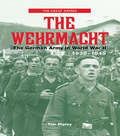- Table View
- List View
Die Enden des Körpers: Versuch einer negativen Prothetik (Anthropologie – Technikphilosophie – Gesellschaft)
by Stefan RiegerDas Buch untersucht den Körper in doppelter Perspektive: Zum einen nimmt es den Körper in einem geometrischen Sinne beim Wort und fragt danach, welche realen und welche imaginären Grenzen dieser hat, wie weit er in reale, augmentierte oder virtuelle Räume hineinreicht, welche Interventionen an seinen Grenzen und Oberflächen ansetzen und nicht zuletzt, welche Aushandlungen sich an seinen Enden, an seinen räumlichen Umgrenzungen und an seiner vermeintlichen Geschlossenheit anlagern. In den Blick geraten so jene Kontaktpunkte, Schnittstellen und Interfaces, die den Körper mit einer Welt verbinden (z.B. im Fall smarter Wohn- und Arbeitsumgebungen) oder ihn von ihr abgrenzen. Der zweite Zugang handelt von der zeitlichen Dimension des Körpers, also von all den Szenarien des Endes, des Untergangs, des Verschwindens und Überflüssigwerdens, die dem Körper prognostiziert wurden. Diesen Szenarien steht eine Vielzahl von Strategien gegenüber, die darauf abzielen, den scheinbar verlorenen Körper wieder zu restituieren.
Perspectives on Theory of Controversies and the Ethics of Communication: Explorations of Marcelo Dascal's Contributions to Philosophy (Logic, Argumentation & Reasoning #2)
by Dana Riesenfeld Giovanni ScarafileAssembling an unprecedented range of considered responses to the noted contributions to philosophy made by Marcelo Dascal, this collection comprises the work of his many friends, colleagues and former students. Beginning with a series of articles on Dascal’s influential insights on philosophical controversy, this volume continues with explorations of Dascal’s celebrated scholarship on Liebnitz, before moving on to papers dealing with his philosophy of language, including interpretations by Dresner and Herring on the phenomenon of emoticons. Taken as a whole, they provide a compelling commentary on Dascal’s prolific and voluminous publications and include fresh perspectives on the theory of argumentation and the ethics of communication. The material collected here extends to political philosophy, such as Morris-Reich's paper exploring the ways in which German social scientists confront issues of antisemitism, the psychology of genius, and the origins of norms in society and culture. Much of the analysis is directly connected to, or influenced by, the philosophical themes, ideas and concepts developed throughout the years by Marcelo Dascal, while others have a looser connection to his work. All of them, however, attest to the remarkable and multifaceted philosophical persona of Marcelo Dascal, who is the guiding light of the rich conceptual dialogue running through this book.
Brand Management: A Theoretical And Practical Approach (PDF)
by Rik RiezebosSince the 1980s, brands and the management of brands have attracted an enormous amount of interest. Companies became acutely aware of how their brand image could mean the difference between success and failure . Brand Management: A theoretical and practical approach gives insight into this phenomenon, moving from the history of the brand to how to develop, manage and protect brands. Brand Management: A theoretical and practical approach takes a decision-making approach to the subject, structured around the decisions a brand or product manager would face when considering their own brand strategy, covering topics such as design, judicial protection, adverse publicity and financial-brand valuation.
Monitoring the Health of Populations by Tracking Disease Outbreaks: Saving Humanity from the Next Plague (ASA-CRC Series on Statistical Reasoning in Science and Society)
by Steven E Rigdon Ronald D. Fricker, Jr.With COVID-19 sweeping across the globe with near impunity, it is thwarting governments and health organizations efforts to contain it. Not since the 1918 Spanish Flu have citizens of developed countries experienced such a large-scale disease outbreak that is having devastating health and economic impacts. One reason such outbreaks are not more common has been the success of the public health community, including epidemiologists and biostatisticians, in identifying and then mitigating or eliminating the outbreaks. Monitoring the Health of Populations by Tracking Disease Outbreaks: Saving Humanity from the Next Plague is the story of the application of statistics for disease detection and tracking. The work of public health officials often crucially depends on statistical methods to help discern whether an outbreak may be occurring and, if there is sufficient evidence of an outbreak, then to locate and track it. Statisticians also help collect critical information, and they analyze the resulting data to help investigators zero in on a cause for a disease. With the recent outbreaks of diseases such as swine and bird flu, Ebola, and now COVID-19, the role that epidemiologists and biostatisticians play is more important than ever. Features: · Discusses the crucial roles of statistics in early disease detection. · Outlines the concepts and methods of disease surveillance. · Covers surveillance techniques for communicable diseases like Zika and chronic diseases such as cancer. · Gives real world examples of disease investigations including smallpox, syphilis, anthrax, yellow fever, and microcephaly (and its relationship to the Zika virus). Via the process of identifying an outbreak, finding its cause, and developing a plan to prevent its reoccurrence, this book tells the story of how medical and public health professionals use statistics to help mitigate the effects of disease. This book will help readers understand how statisticians and epidemiologists help combat the spread of such diseases in order to improve public health across the world.
Monitoring the Health of Populations by Tracking Disease Outbreaks: Saving Humanity from the Next Plague (ASA-CRC Series on Statistical Reasoning in Science and Society)
by Steven E Rigdon Ronald D. Fricker, Jr.With COVID-19 sweeping across the globe with near impunity, it is thwarting governments and health organizations efforts to contain it. Not since the 1918 Spanish Flu have citizens of developed countries experienced such a large-scale disease outbreak that is having devastating health and economic impacts. One reason such outbreaks are not more common has been the success of the public health community, including epidemiologists and biostatisticians, in identifying and then mitigating or eliminating the outbreaks. Monitoring the Health of Populations by Tracking Disease Outbreaks: Saving Humanity from the Next Plague is the story of the application of statistics for disease detection and tracking. The work of public health officials often crucially depends on statistical methods to help discern whether an outbreak may be occurring and, if there is sufficient evidence of an outbreak, then to locate and track it. Statisticians also help collect critical information, and they analyze the resulting data to help investigators zero in on a cause for a disease. With the recent outbreaks of diseases such as swine and bird flu, Ebola, and now COVID-19, the role that epidemiologists and biostatisticians play is more important than ever. Features: · Discusses the crucial roles of statistics in early disease detection. · Outlines the concepts and methods of disease surveillance. · Covers surveillance techniques for communicable diseases like Zika and chronic diseases such as cancer. · Gives real world examples of disease investigations including smallpox, syphilis, anthrax, yellow fever, and microcephaly (and its relationship to the Zika virus). Via the process of identifying an outbreak, finding its cause, and developing a plan to prevent its reoccurrence, this book tells the story of how medical and public health professionals use statistics to help mitigate the effects of disease. This book will help readers understand how statisticians and epidemiologists help combat the spread of such diseases in order to improve public health across the world.
Handbook of South American Governance (Routledge International Handbooks)
by Pía Riggirozzi Christopher WyldeGovernance in South America is signified by strategies pursued by state and non-state actors directed to enhancing (some aspect of) their capabilities and powers of agency. It is about the spaces and the practices available, demanded or created to ‘make politics happen’. This framework lends explanatory power to understand how governance has been defined and practiced in South America. Pía Riggirozzi and Christopher Wylde bring together leading experts to explore what demands and dilemmas have shaped understanding and practice of governance in South America in and across the region. The Handbook suggests that governance dilemmas of inequitable and unfulfilled political economic governance in South America have been constant historical features, yet addressed and negotiated in different ways. Building from an introduction to key issues defining governance in South America, this Handbook proceeds to examine institutions, actors and practices in governance focusing on three core processes: evolution of socio-economic and political justice claims as central to the demands of governance; governance frameworks foregrounding particular issues and often privileging particular forms of political practice; and iterative and cumulative processes leading to new demands of governance addressing recognition and identity politics. This Handbook will be a key reference for those concerned with the study of South America, South American political economy, regional governance, and the politics of development.
Handbook of South American Governance (Routledge International Handbooks)
by Pia Riggirozzi Christopher WyldeGovernance in South America is signified by strategies pursued by state and non-state actors directed to enhancing (some aspect of) their capabilities and powers of agency. It is about the spaces and the practices available, demanded or created to ‘make politics happen’. This framework lends explanatory power to understand how governance has been defined and practiced in South America. Pía Riggirozzi and Christopher Wylde bring together leading experts to explore what demands and dilemmas have shaped understanding and practice of governance in South America in and across the region. The Handbook suggests that governance dilemmas of inequitable and unfulfilled political economic governance in South America have been constant historical features, yet addressed and negotiated in different ways. Building from an introduction to key issues defining governance in South America, this Handbook proceeds to examine institutions, actors and practices in governance focusing on three core processes: evolution of socio-economic and political justice claims as central to the demands of governance; governance frameworks foregrounding particular issues and often privileging particular forms of political practice; and iterative and cumulative processes leading to new demands of governance addressing recognition and identity politics. This Handbook will be a key reference for those concerned with the study of South America, South American political economy, regional governance, and the politics of development.
Natural Kinds, Laws of Nature and Scientific Methodology (Studies in History and Philosophy of Science #12)
by Peter J. RiggsAustralia and New Zealand boast an active community of scholars working in the field of history, philosophy and social studies of science. 'Australasian Studies in History and Philosophy of Science' aims to provide a distinctive publication outlet for their work. Each volume comprises a group of essays on a connected theme, edited by an Australian or a New Zealander with special expertise in that particular area. In each volume, a majority of the contributors is from Australia or New Zealand. CQntributions from elsewhere are by no means ruled out, however, and are indeed actively encouraged wherever appropriate to the balance of the volume in question. Earlier volumes in the series have been welcomed for significantly advancing the discussion of the topics they have dealt with. The present volume will I believe be greeted equally enthusiastically by readers in many parts of the world. R. W. Home General Editor Australasian Studies in History and Philosophy of Science Vll ACKNOWLEDGEMENTS The stimulus to assemble this collection of essays grew from a number of interesting seminars conducted during the academic years 1991-92, under the auspices of the Victorian Centre for the History and Philosophy of Science (which is centred at the Bundoora campus of La Trobe University in the outer suburbs of Melbourne). Some of the seminar presentations to the Victorian Centre for HPS and other articles awaiting pUblication have been made available as part of the Pre-print Series of the Victorian Centre.
Inference in Argumentation: A Topics-based Approach To Argument Schemes (Argumentation Library #34)
by Eddo Rigotti Sara GrecoThis book investigates the role of inference in argumentation, considering how arguments support standpoints on the basis of different loci. The authors propose and illustrate a model for the analysis of the standpoint-argument connection, called Argumentum Model of Topics (AMT). A prominent feature of the AMT is that it distinguishes, within each and every single argumentation, between an inferential-procedural component, on which the reasoning process is based; and a material-contextual component, which anchors the argument in the interlocutors’ cultural and factual common ground. The AMT explains how these components differ and how they are intertwined within each single argument. This model is introduced in Part II of the book, following a careful reconstruction of the enormously rich tradition of studies on inference in argumentation, from the antiquity to contemporary authors, without neglecting medieval and post-medieval contributions. The AMT is a contemporary model grounded in a dialogue with such tradition, whose crucial aspects are illuminated in this book.
Birds of South Africa (Helm Wildlife Guides)
by Adam RileyThe definitive photographic guide to the amazing avifauna of South Africa.South Africa – from the vast savanna of Kruger to the unparalleled richness of the Cape – is one of the most biodiverse countries in the world, featuring the highest number of endemics of any African country, as well as rich seabird assemblage and vast numbers of more widespread yet no less spectacular African birds.The perfect companion for any wildlife-friendly visitor, Birds of South Africa provides photographic coverage of more than 340 species that regularly occur in the region. Concise text for each species includes information on identification, songs and calls, behaviour, distribution and habitat, with each photo having been carefully selected to guide identification. A guide to the best birdwatching sites in South Africa is also included. Portable yet authoritative, this is the perfect guide for travellers and birdwatchers visiting this spectacular and bird-rich destination.
Birds of South Africa (Helm Wildlife Guides)
by Adam RileyThe definitive photographic guide to the amazing avifauna of South Africa.South Africa – from the vast savanna of Kruger to the unparalleled richness of the Cape – is one of the most biodiverse countries in the world, featuring the highest number of endemics of any African country, as well as rich seabird assemblage and vast numbers of more widespread yet no less spectacular African birds.The perfect companion for any wildlife-friendly visitor, Birds of South Africa provides photographic coverage of more than 340 species that regularly occur in the region. Concise text for each species includes information on identification, songs and calls, behaviour, distribution and habitat, with each photo having been carefully selected to guide identification. A guide to the best birdwatching sites in South Africa is also included. Portable yet authoritative, this is the perfect guide for travellers and birdwatchers visiting this spectacular and bird-rich destination.
The Wit and Wisdom of Sir Alex Ferguson
by Chris RileyWhen Sir Alex Ferguson announced his retirement as manager of Manchester United in 2013 he called time on the most successful career in football history. During his twenty-seven years at the helm of the world's most famous club, he has shown himself to be a paragon of leadership, an incomparable man-manager and an unparalleled wielder of the notorious hairdryer. Commentating on the game, its characters and its components, Sir Alex is the complete football philosopher. From dealing with narcissistic footballers to demolishing the overinflated egos of opposition managers, this is The Wit and Wisdom of Sir Alex Ferguson.
The Force of Language (Language, Discourse, Society)
by D. Riley J. LecercleThe Force of Language illustrates how the philosophy of Language, if differently conceived, can directly incorporate questions of political thought and of emotionality, and offers the practical case of defensive strategies against the abusive speech. This follows a broad consideration of the inner voice or inner speech as a test case for a new approach to language, in particular as a way of radically rethinking the usual contrast between inner and outer through furnishing an account of how we internalize speech. The book's core offers a substantial critique of orthodox approaches to the philosophy of language form Chomsky and others; drawing on European political thought from Marx to Deleuze, it will move beyond this inheritance to explain and demonstrate its fresh conception of language at work.
Great British Dad-ventures: 101 maps for dads who like doing things
by Mat RileyWATERSTONES' BEST BOOKS OF THE YEAR 2023: NATURE AND TRAVELWhen you're stuck for a great gift for Dad, look no further than GREAT BRITISH DADVENTURES: the ultimate guide to helping Dad discover adrenaline-inducing, mind-expanding or stomach-pleasing mini or big adventures around the British Isles - and families of all ages can join in the fun too!Using maps of all the Scottish and English counties and the Welsh principal areas, the book pinpoints almost 1,000 destinations and activities, including plenty of free and baby-friendly options (and a few that are for Dad's friends only). Whether he's looking for something interesting to do nearby at the weekend or heading off on holiday around our vast and varied British Isles, GREAT BRITISH DAD-VENTURES has all the inspiration Dad needs to get off his screen and do something exciting. Activities include: - walks, hikes, cycling and mountain biking - castles and museums - watersports, wild swimming and boat trips - nature reserves and safari parks - orienteering and bushcraft experiences - scenic driving routes and walking tours - climbing, coasteering and gorge walking - brewery and vineyard tours - and plenty of activities that are unique to the local areas.
At Sixes and Sevens: How To Understand Numbers And Make Maths Easy
by Rachel RileyAn engaging, accessible introduction into how numbers work and why we shouldn’t be afraid of them, from maths expert Rachel Riley.
Star Struck: An Encyclopedia of Celebrity Culture
by Sam RileyThis balanced examination looks at America's pervasive celebrity culture, concentrating on the period from 1950 to the present day.Star Struck: An Encyclopedia of Celebrity Culture is neither a stern critic nor an apologist for celebrity infatuation, a phenomenon that sometimes supplants more weighty matters yet constitutes one of our nation's biggest exports. This encyclopedia covers American celebrity culture from 1950 to 2008, examining its various aspects—and its impact—through 86 entries by 30 expert contributors.Demonstrating that all celebrities are famous, but not all famous people are celebrities, the book cuts across the various entertainment medias and their legions of individual "stars." It looks at sports celebrities and examines the role of celebrity in more serious pursuits and institutions such as the news media, corporations, politics, the arts, medicine, and the law. Also included are entries devoted to such topics as paranoia and celebrity, one-name celebrities, celebrity nicknames, family unit celebrity, sidekick celebrities, and even criminal celebrities.
Star Struck: An Encyclopedia of Celebrity Culture
by Sam G. RileyThis balanced examination looks at America's pervasive celebrity culture, concentrating on the period from 1950 to the present day.Star Struck: An Encyclopedia of Celebrity Culture is neither a stern critic nor an apologist for celebrity infatuation, a phenomenon that sometimes supplants more weighty matters yet constitutes one of our nation's biggest exports. This encyclopedia covers American celebrity culture from 1950 to 2008, examining its various aspects—and its impact—through 86 entries by 30 expert contributors.Demonstrating that all celebrities are famous, but not all famous people are celebrities, the book cuts across the various entertainment medias and their legions of individual "stars." It looks at sports celebrities and examines the role of celebrity in more serious pursuits and institutions such as the news media, corporations, politics, the arts, medicine, and the law. Also included are entries devoted to such topics as paranoia and celebrity, one-name celebrities, celebrity nicknames, family unit celebrity, sidekick celebrities, and even criminal celebrities.
Parenting Girls on the Autism Spectrum: Overcoming the Challenges and Celebrating the Gifts
by Eileen Riley-HallEach chapter in this book explores a topic of concern for parents of children on the autism spectrum, offering support on issues such as school, friendships, meltdowns, special gifts, therapies and interventions. This book is full of advice and insight on the unique and rewarding challenges presented when you have a daughter on the autism spectrum.
Representational Content and the Objects of Thought
by Nicholas RimellThis book defends a novel view of mental representation—of how, as thinkers, we represent the world as being. The book serves as a response to two problems in the philosophy of mind. One is the problem of first-personal, or egocentric, belief: how can we have truly first personal beliefs—beliefs in which we think about ourselves as ourselves—given that beliefs are supposed to be attitudes towards propositions and that propositions are supposed to have their truth values independent of a perspective? The other problem is how we can think about nonexistents (e.g., Santa Claus) given the widespread view that thought essentially involves a relation between a thinker and whatever is being thought about. The standard responses to this puzzle are either to deny that thought is essentially relational or to insist that it is possible to stand in relations to nonexistents. This book offers an error theory to the problem. The responses from this book arise from the same commitment: a commitment to treating talk of propositions—as the things towards which our beliefs are attitudes—as talk of entities that actually exist and that play a constitutive and explanatory role in the activity of thought.
Principles of Orchestration
by Nikolai Rimsky-Korsakov"To orchestrate is to create, and this cannot be taught," wrote Nikolay Rimsky-Korsakov, the great Russian composer whose genius for brilliant, highly colored orchestration is unsurpassed. But invention, in all art, is closely allied to technique, and technique can be taught. This book, therefore, which differs from most other texts on the subject because of its tremendous wealth of musical examples and its systematic arrangement of material according to each constituent of the orchestra, will undoubtedly be of value to any music student. It is a music classic, perhaps the only book on classical orchestration written by a major composer.In it, the composer aims to provide the reader with the fundamental principles of modern orchestration from the standpoint of brilliance and imagination, and he devotes considerable space to the study of tonal resonance and orchestral combination. In his course, he demonstrates such things as how to produce a good-sounding chord of certain tone-quality, uniformly distributed; how to detach a melody from its harmonic setting; correct progression of parts; and other similar problems.The first chapter is a general review of orchestral groups, with an instrument-by-instrument breakdown and material on such technical questions as fingering, range, emission of sound, etc. There follows two chapters on melody and harmony in strings, winds, brasses, and combined groups. Chapter IV, Composition of the Orchestra, covers different ways of orchestrating the same music; effects that can be achieved with full tutti; tutti in winds, tutti pizzicato, soli in the strings, etc.; chords; progressions; and so on. The last two chapters deal with opera and include discussion of solo and choral accompaniment, instruments on stage or in the wings, technical terms, soloists (range, register, vocalization, vowels, etc.), voices in combination, and choral singing. Immediately following this text are some 330 pages of musical examples drawn from "Sheherazade," the "Antar Symphony," "Capriccio Espagnol," "Sadko," "Ivan the Terrible," "Le Coq d'Or," "Mlada," "The Tsar's Bride," and others of Rimsky-Korsakov's works. These excerpts are all referred to in the text itself, where they illustrate, far better than words, particular points of theory and actual musical practice. They are largely responsible for making this book the very special (and very useful) publication it is.This single-volume edition also includes a brief preface by the editor and extracts from Rimsky-Korsakov's 1891 draft and final versions of his own preface, as well as an appendixed chart of single tutti chords in the composer's works.
Exploring Quantum Foundations with Single Photons (Springer Theses)
by Martin RingbauerThis thesis uses high-precision single-photon experiments to shed new light on the role of reality, causality, and uncertainty in quantum mechanics. It provides a comprehensive introduction to the current understanding of quantum foundations and details three influential experiments that significantly advance our understanding of three core aspects of this problem. The first experiment demonstrates that the quantum wavefunction is part of objective reality, if there is any such reality in our world. The second experiment shows that quantum correlations cannot be explained in terms of cause and effect, even when considering superluminal influences between measurement outcomes. The final experiment in this thesis demonstrates a novel uncertainty relation for joint quantum measurements, where the textbook relation does not apply.
Berries, Rasp- & Black: Storey Country Wisdom Bulletin A-33 (Storey Country Wisdom Bulletin)
by Louise RiotteSince 1973, Storey's Country Wisdom Bulletins have offered practical, hands-on instructions designed to help readers master dozens of country living skills quickly and easily. There are now more than 170 titles in this series, and their remarkable popularity reflects the common desire of country and city dwellers alike to cultivate personal independence in everyday life.
Kiss Kiss, Bang Bang: The Boom In British Thrillers From Casino Royale To The Eagle Has Landed
by Mike RipleyWINNER OF THE HRF KEATING AWARD FOR BEST NON-FICTION CRIME BOOK 2018An entertaining history of British thrillers from Casino Royale to The Eagle Has Landed, in which award-winning crime writer Mike Ripley reveals that, though Britain may have lost an empire, her thrillers helped save the world. With a foreword by Lee Child.
The Wehrmacht: The German Army in World War II, 1939-1945
by Tim RipleyTo see the foreword, the introduction, a generous selection of sample pages, and more, visit the website The Wehrmacht website.In this unique volume, expert Tim Ripley introduces the reader to the world of the German army, covering in detail concepts such as mobile defense and the formidable Blitzkrieg, and explains why the Wehrmacht was able to fight so long, with such fearsome effectiveness. Also includes 180 color and black and white maps and illustrations.
The Wehrmacht: The German Army in World War II, 1939-1945
by Tim RipleyTo see the foreword, the introduction, a generous selection of sample pages, and more, visit the website The Wehrmacht website.In this unique volume, expert Tim Ripley introduces the reader to the world of the German army, covering in detail concepts such as mobile defense and the formidable Blitzkrieg, and explains why the Wehrmacht was able to fight so long, with such fearsome effectiveness. Also includes 180 color and black and white maps and illustrations.
